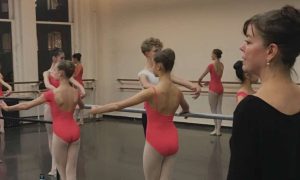Next up in our series, Casting in the age of the cloud, is about reading and following directions when submitting online material.
Awhile back, someone I know was having a bit of trouble sending money through a money transfer site. She told me the process was too complicated and that she didn’t understand it; as a result, she finally decided that she didn’t want to use the money transfer site at all but instead physically go to a bank and pay for a wire transfer. I told her to hold off on the bank transfer until the next time we were in the same room, so that I could help her.
The next time we were in the same city and at the same address, we went through the process together.
Now, I am the kind of person who often doesn’t like to simply give people all the steps word for word but instead ask questions that allow them to basically do the process themselves — and in so doing, learn to be autonomous. So we logged into her account, and to the question “What do I do now?”, I answered, “In most applications, the answer to that question can be found in the menus. Let’s look through the menus.” So as we clicked through each menu choice, she asked at each one, “So now what do I do?”
To which I answered, “What does it say on the page?”
After clicking through a couple of the menus, we got to the money transfer page. Same question: “So now what do I do?” Same answer: “What does it say on the page?” She looked, then read one of the menu choices: “Send Money?”
Affirmative.
On the next page, we saw a field called “Name or email address.” Same question, to which I answered, “What do you think?” She got it.
We went to through the next few pages in the process, and eventually we got to the final page, which was pretty much blank, except for one sentence to the effect of “Click Okay to finalize transaction.” On the page there was one button, labeled…
You guessed it — “Okay.”
But instead of clicking “Okay,” she asked the same question, “So now what do I do?” but then right away continued, “Maybe I should go back. I’ll go back.”
I quickly put my hand on hers and managed to stop her before she hit the “Back” arrow on the browser. I will admit that I raised my voice a bit louder as I repeated, “What… does it say on the page?” She read it, then asked, “I click Okay?”
She did, and the transaction was done. Finished. Completed.
Then the surprising reaction: “That’s it? That was easy!”
A new cloud shift but with age-old requirements
In the last episode of this Casting in the age of the cloud article series, I hinted that the entire world of dance is currently undergoing a post-pandemic shift toward the Cloud. It is a curious migration — not curious because of the fact itself of moving toward technology (it was inevitable) but curious because of the speed with which it has happened, after having avoided it for so long. Just a short time ago, video conferencing was a mystery to dance world. Today, it is a staple, as dance teachers around the world now have no choice but to teach a large number of classes through video conferencing. It has been quite amazing to watch the industry discover technology with such fervor, either loving it or hating it. But using it, regardless.
Video conferencing has been a part of my own life for a long time. But my first time using video conferencing and screen sharing to actually train long-distance audition partners was in 2008, when I was preparing a dance audition in Australia that I ran in Sydney in 2009. It has been an invaluable tool that I have used regularly since then, although my first time using it in a live audition context was not until much later, in 2016.
Even online casting and auditions through video submissions have begun to spread. In a group discussion that I participated in with other industry professionals when the lockdown first began, one of the participants mentioned that they had been auditioning through online video submissions for the last a year or so. Another curious migration, I thought, because a large part of my job for the last 16 years has been auditioning candidates through online video submissions.
The reason I mention this is not to rub the dance community’s technological lag in anyone’s nose; far from it, the point of my story lies elsewhere. Sixteen years of casting online has come with its frustrations, frustrations linked to not only trying to convince dancers to use online systems but also getting them to submit the proper material and information requested. I suspect that now that others are also doing their casting online, they too may begin experiencing some of the same frustrations. I feel for them. And I empathize. The main frustration has been what I just mentioned: the submission of inadequate material or information. When a casting call is posted publicly, there is usually what we call a “breakdown” included: a physical description of the role, a list of the type of skills needed, the submission material needed from each candidate, a submission deadline and where to submit their application. Sometimes, there are instructions included directly in the breakdown on how to submit; sometimes, there is a link toward a web page where one can find submission instructions.
These instructions are important to consider, because when a casting director or choreographer asks you for certain professional tools (CV, photos, video, etc.) the purpose behind the request is to gather information — information necessary in order to make a decision on whether or not you may be right for a project, a company, a role. And the reason that certain formats of these professional tools are specifically requested is to be able to gather this information as quickly as possible, because, more times than not, there are a lot of submissions to get through.
Whenever you send in material that hides that information (i.e. in an over-edited showreel), then you are not letting them know what they need to know in order to make that decision. In many cases, there is no time to get back to you and ask you to send in the correct material; most of the time, your submission will just be thrown out and they’ll move on to the next candidate. Unfortunately, no one has the time to waste.
Keep in mind as well that when you do not submit what is asked for, we on the receiving end get the feeling that you either can’t or won’t follow directions. The outcome of that is simple: no one wants to work with someone who doesn’t follow directions.
And in the event of any ambiguity, I say please do ask questions. It is always better to clarify what is not clear, directly from the source, than to submit the wrong thing. However — although I encourage all dancers to ask questions, to not be afraid of approaching casting directors for clarification — before doing so, I would very much encourage dancers to take one step back and ask themselves one crucial question first.
“What does it say on the page?”
By Rick Tjia of Dance Informa.













